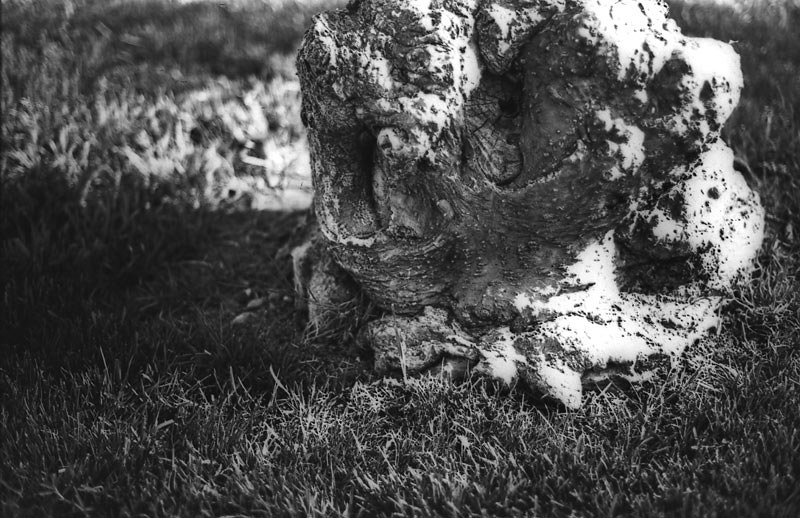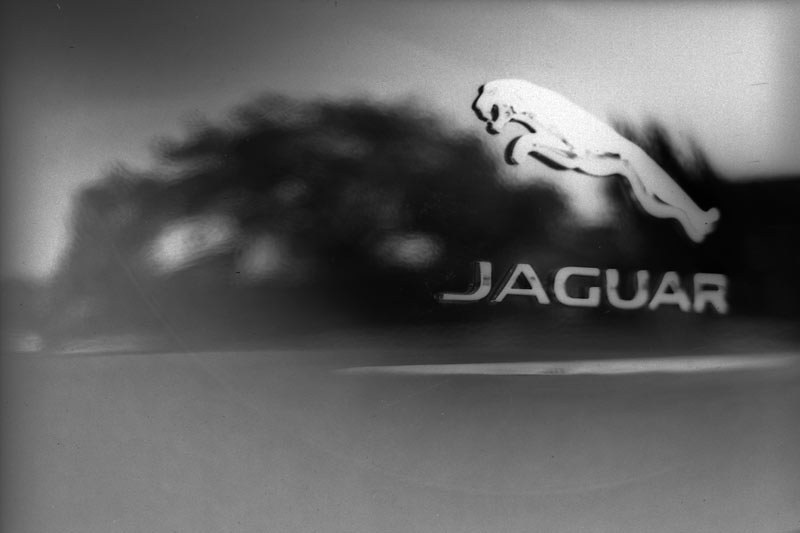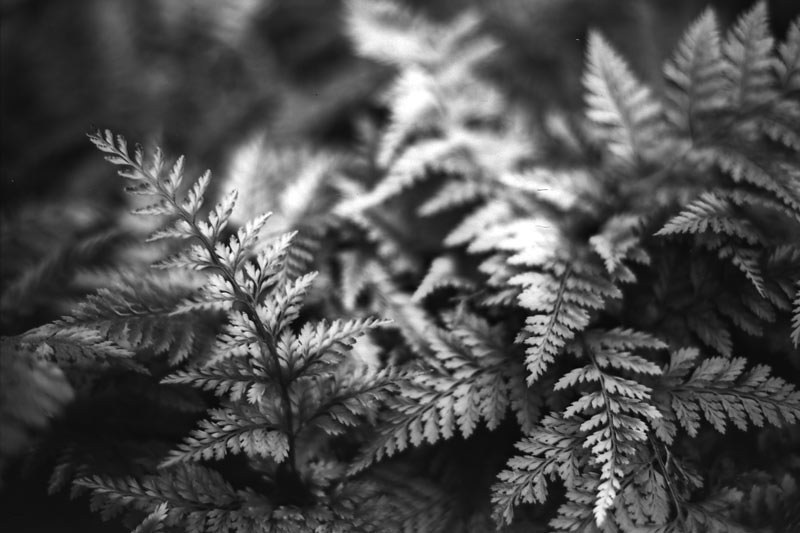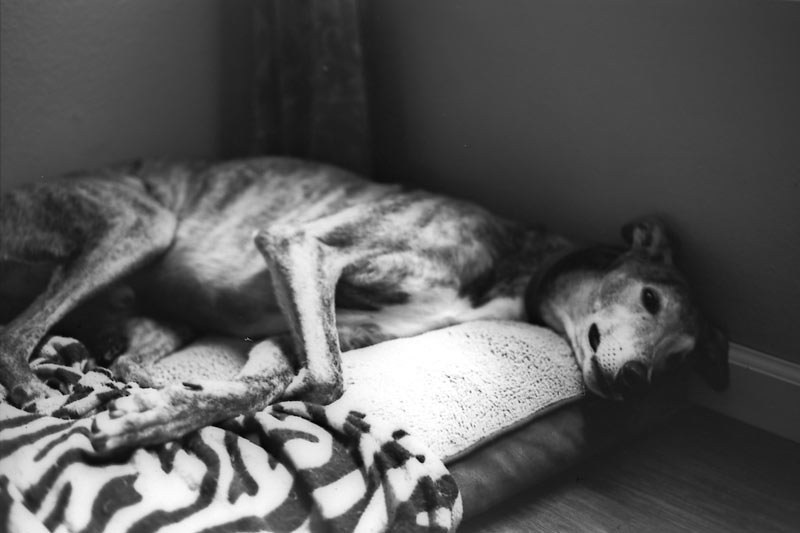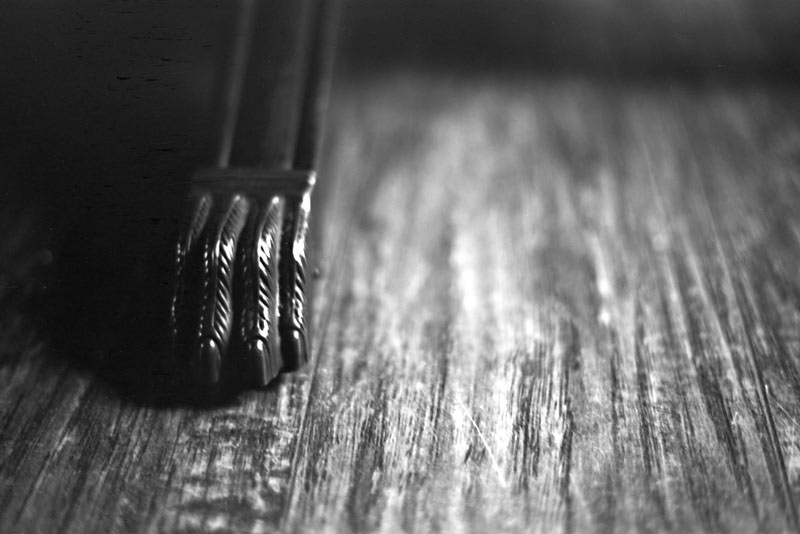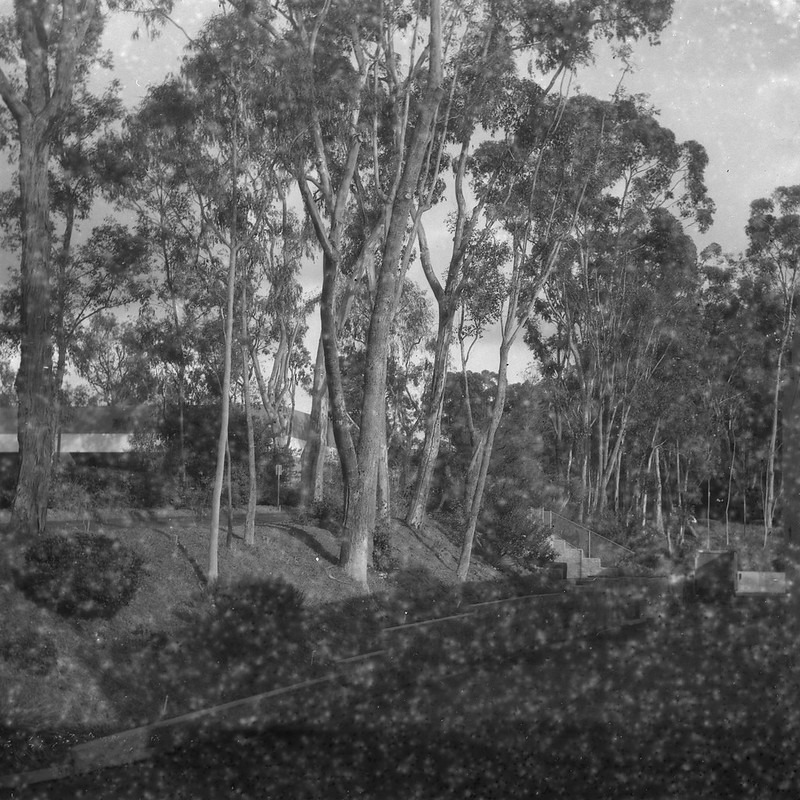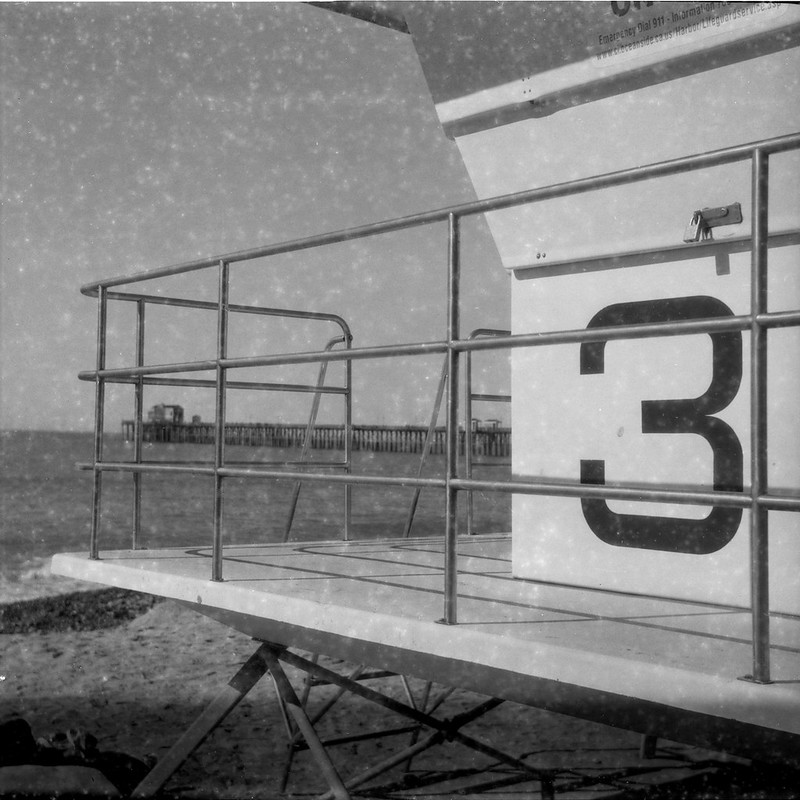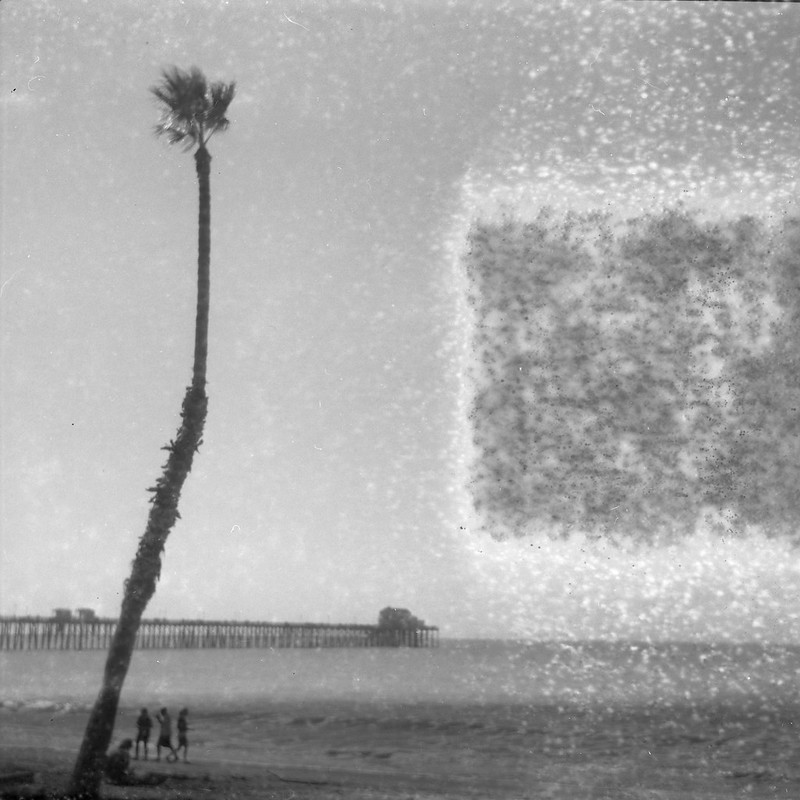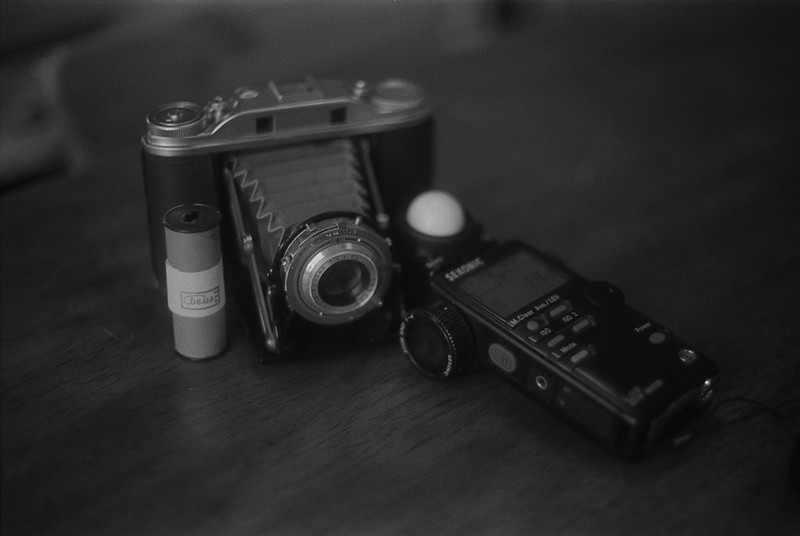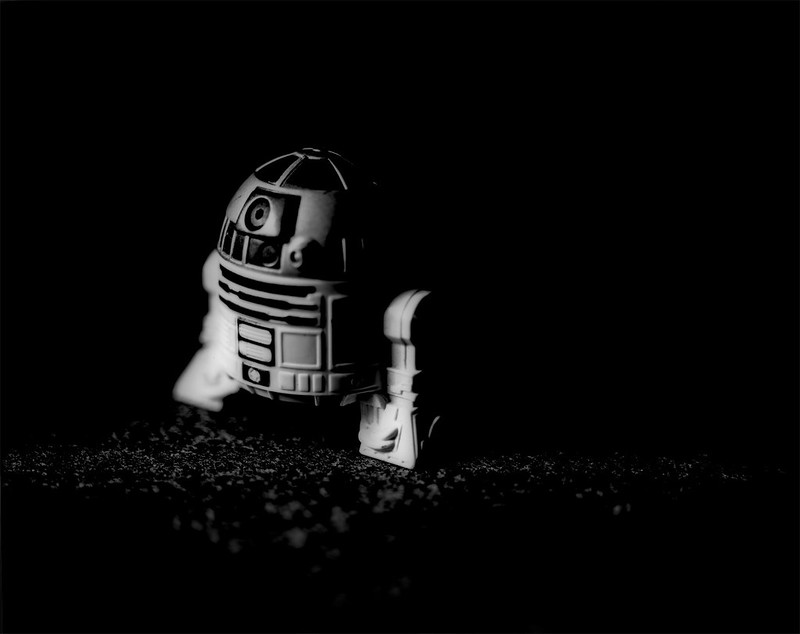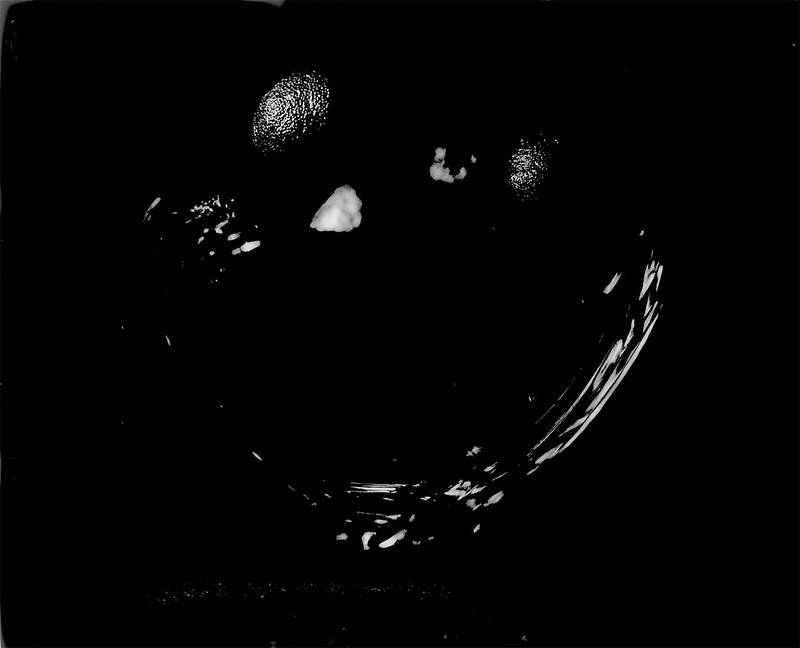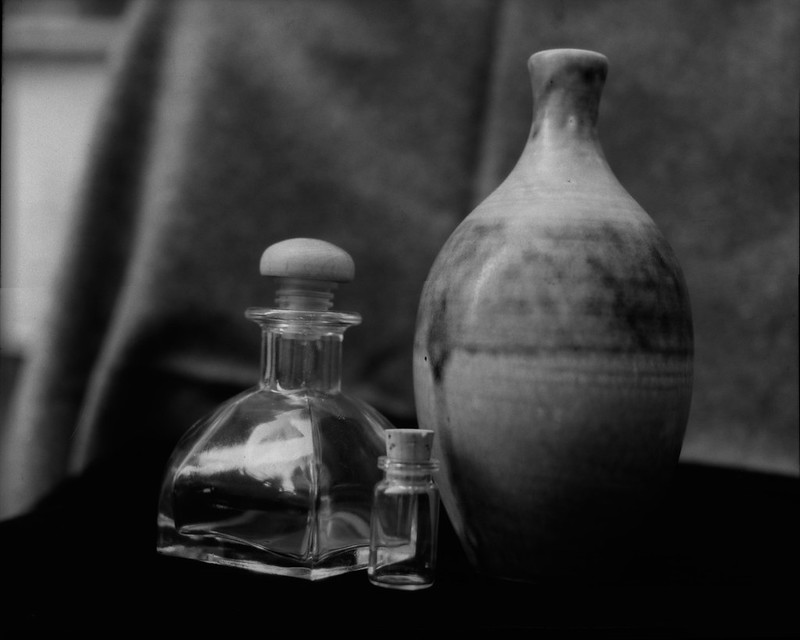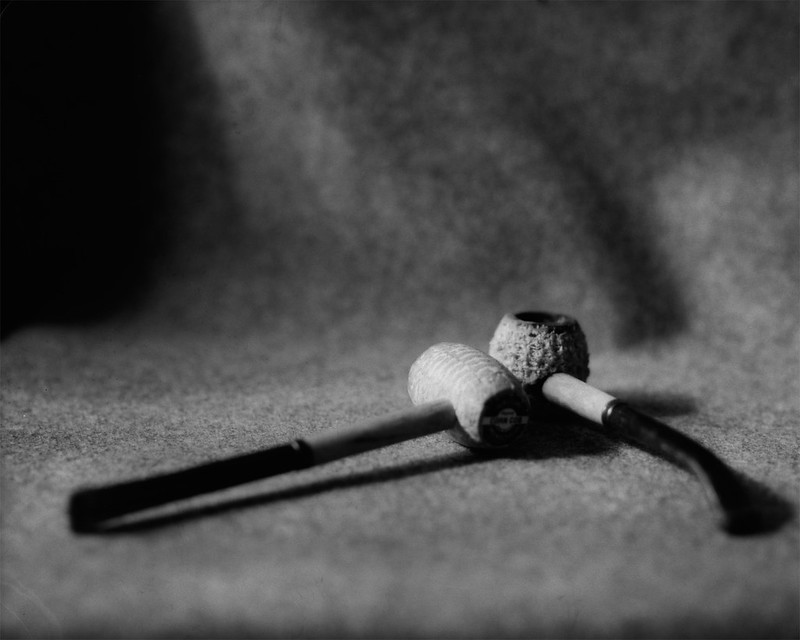I decided to visit a thrift store down in a part of town that I don't really get to very often. I had seen on CraigsList that they had some "darkroom equipment", so I thought I would go check it out. When I got there, the selection was sort of meager, but the prices were better than the 'bay', so I decided to have a closer look. There were a couple of Watson daylight film loaders and I can always use another one of those, so I picked one up. It had a typed (like on a typewriter) label on it that said "
KODALITH ORTHO type 3 / 6556 film". I had a thought that there may still be film in it, so I did what any kid rummaging around under the Christmas tree would do... I shook it. It rattled a bit. It wasn't heavy like it had a full roll, so maybe there was just an empty spool in there. I decided to take a peek. What's the worst that could happen? If it was empty, no harm. If there was film in it, it wasn't very much and it was old iso 6 ortho film that had been sitting on a shelf for who knows how long and was probably fogged anyway. But I didn't just tear the lid off, I carefully cracked it a little and looked in. There was indeed film in there. Was it labeled correctly? Had someone else opened it and exposed the whole thing? How old was it? These were all unanswerable questions that really didn't matter. I needed the loader, so I bought it. The only question that mattered about the film was "Is it still any good for taking pictures?" and the only way to answer that was to stick it in a camera and shoot it. So that's what I did.
I loaded one roll of about 24 exposures and put that aside. I figured if my peek had fogged anything it would be most evident on the 'outer' parts of the roll. So I loaded another roll of about 20 exposures and put it in my trusty Pentax K1000. This was just a test roll, but I still tried to make a little effort to get something I would like to look at. I have never shot a picture of a test chart and I'm not going to start now.
I had some Kodak X-Tol developer mixed up already, so I decided just to use that at 1:1 with dH2O. I cut the leader off and did a quick test to make sure the developer was still good and to check the fixing time. I dunked the leader in developer for 5 minutes and it looked pretty opaque. Then I fixed for 4 minutes and the undeveloped area cleared in about 2 minutes, but the developed area got a bit less dense too. So I decided on a 10 minute dev time and a 5 minute fix. I don't have enough of this film to worry about figuring out 'the right' times and concentration. I probably only have enough in the loader to make 2 more 24exp rolls, so this is just for fun and for the information of anyone who might find themselves in a situation where they have to decide whether to keep some old unknown film or toss it.
So without further ado, here are some of the results... The highlights (and some of the mid-lights) are blown in all of them, and there is indeed some fogging (probably from my peek) on some frames. In fact in some (not shown here) there are only blown highlights! I think I may have over-exposed using iso 10. Next roll I will try iso 20 and see what happens. It is high contrast film by design, so a full range of tones is not to be expected. But the mere fact that I got recognizable images from this poor tormented film is really a credit to the medium. This film went out of production in 2002. Digital formats that old are already obsolete! So I'm going to enjoy my last few feet of this good found film and treat it with the respect it deserves. Thank you Kodak for making products to last decades, indeed centuries!!
